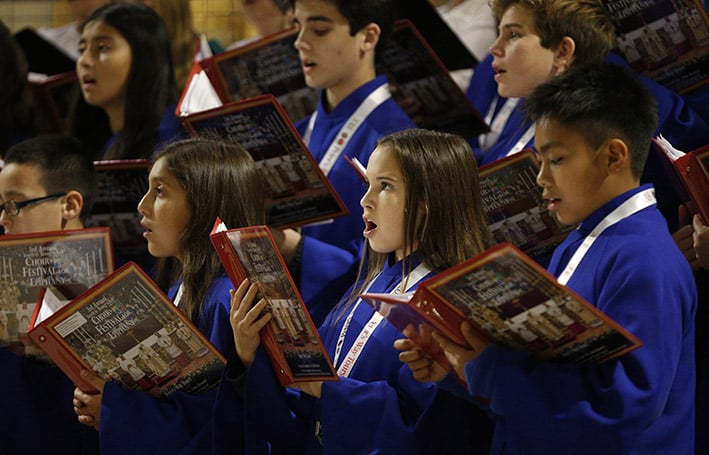
Church choirs, music ministers and congregations are all familiar with classic carols like Silent Night, Away in a Manger, or Angels We Have Heard on High—especially at this busy time of year, when their repertoires have been polished up and rehearsed for Christmas.
But have you ever heard of the first-ever “carol” written for the Nativity?
Scholars agree that Jesus Refulsit Omnium (Jesus, Light of All the Nations) was the first Christmas song, attributed to St Hilary of Poitiers.
It wasn’t strictly a Christmas carol, but rather a Latin hymn written around 336 AD after the first Christmas celebration.
St Hilary, regarded as one of the earliest Latin hymnographers of the Western church, was a Catholic convert, a bishop and doctor of the church from Poitiers, France.
Jesus Refulsit Omnium is focused on the Epiphany, the enlightenment of the Magi, the three Wise Men who followed a star to adore the infant Jesus.
At times St Hilary’s hymn has been referred to as a motet, a song, or a carol, but a more accurate description would be a hymn.
Hymns were one of the earliest musical forms developed in the Roman church and are songs or poems of praise, with the term derived from the Greek word hymnos meaning “song of praise.”
St Hilary’s interest in hymnography stemmed from his exile to Phrygia in Asia Minor, now Turkey.
There he was exposed to Greek metrical hymns. On his return to Poitiers in 361 he used this knowledge to introduce hymns in Latin into the Western church.
Jesus Refulsit Omnium would likely have been sung as part of the fixed times of prayer during the day, what we now call the Liturgy of the Hours, during the Christmas-Epiphany season.
Unfortunately, it seems we do not have any early written scores for Jesus Refulsit Omnium.
Hymns were not widely notated in the early church, but were memorised and passed down orally.
Later, a form of notation called “neumes” was developed that helped the singer to memorise the melodies.
These hymns eventually became the humble Christmas carol, in the form we now know it. Its development can be traced back to the 13th century, and like the Nativity scene, is said to have been influenced by St Francis of Assisi.
Contemporary composers have used St Hilary’s text in their own works, and plenty of wonderful arrangements of Jesus Refulsit Omnium are available today.
One well-known version by Welsh composer Steven Griffin, sung by the choir of Magdalen College, Oxford University, can be heard by scanning the QR code on this page.
And St Hilary’s Epiphany theme has been widely taken up by many well-known Christmas carols, such as We Three Kings, The First Noel and What Child Is This?
This Christmas we hope that Christ, the Light of all Nations, has “shone forth” every blessing on you and your families, just as St Hilary writes in his ancient and mysterious hymn.
Jesus Refulsit Omnium (Latin)
Jesus refulsit omnium
Pius redemptor gentium
Totum genus fidelium
Laudes celebret dramatum
Quem stella natum fulgida
Monstrat micans per authera
Magosque duxit praevia
Ipsius ad cunabula
Illi cadentes parvulum
Pannis adorant obsitum
Verum fatentur ut Deum
Munus ferendo mysticum.
Jesus Refulsit Omnium (English)
Jesus, devoted redeemer of all nations, has shone forth,
Let the whole family of the faithful celebrate the stories
The shining star, gleaming in the heavens, makes him known at his birth
and, going before, has led the Magi to his cradle
Falling down, they adore the tiny baby hidden in rags,
as they bear witness to the true God by bringing a mystical gift.
Click here to listen to Jesus Refulsit Omnium
